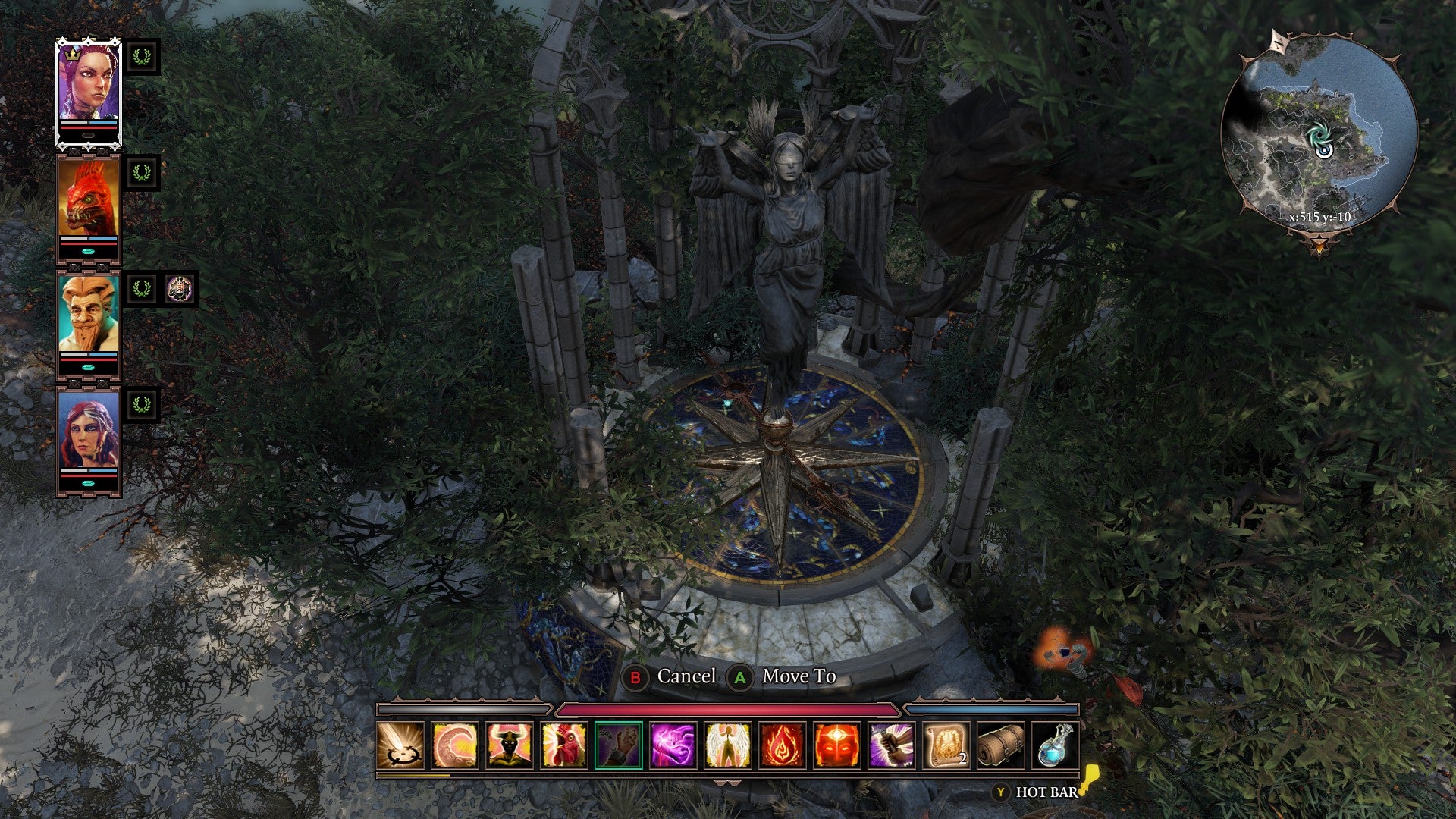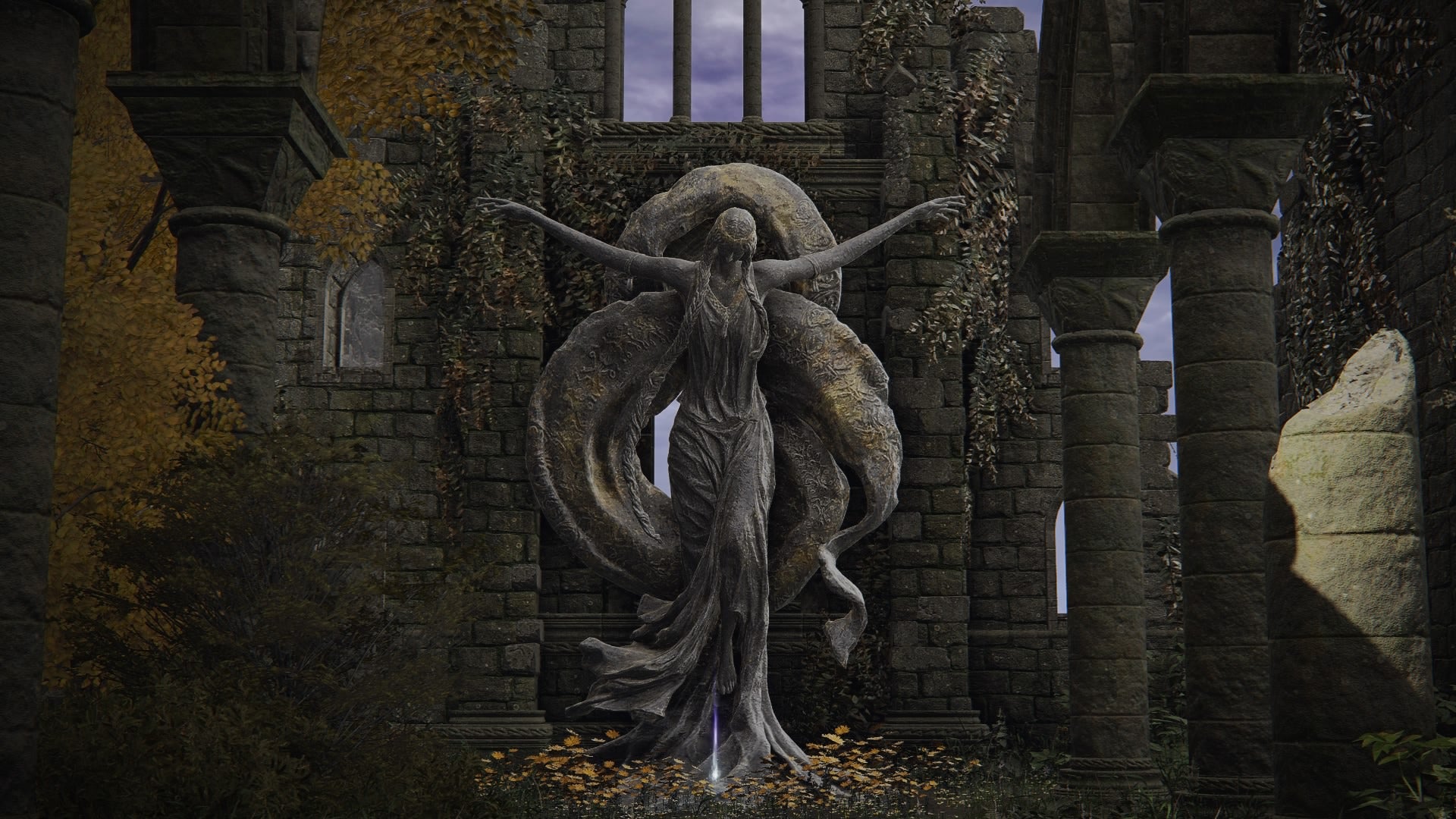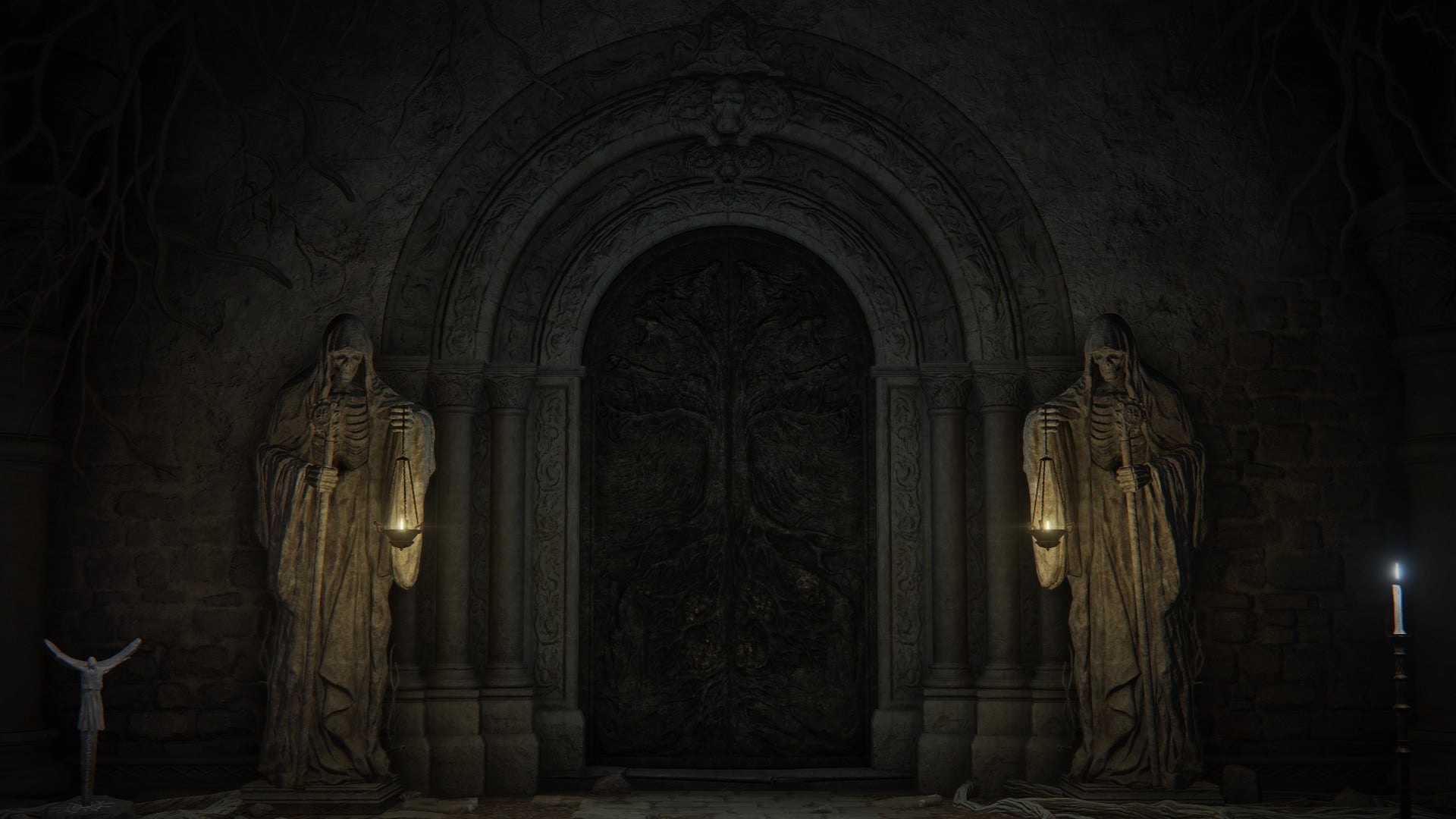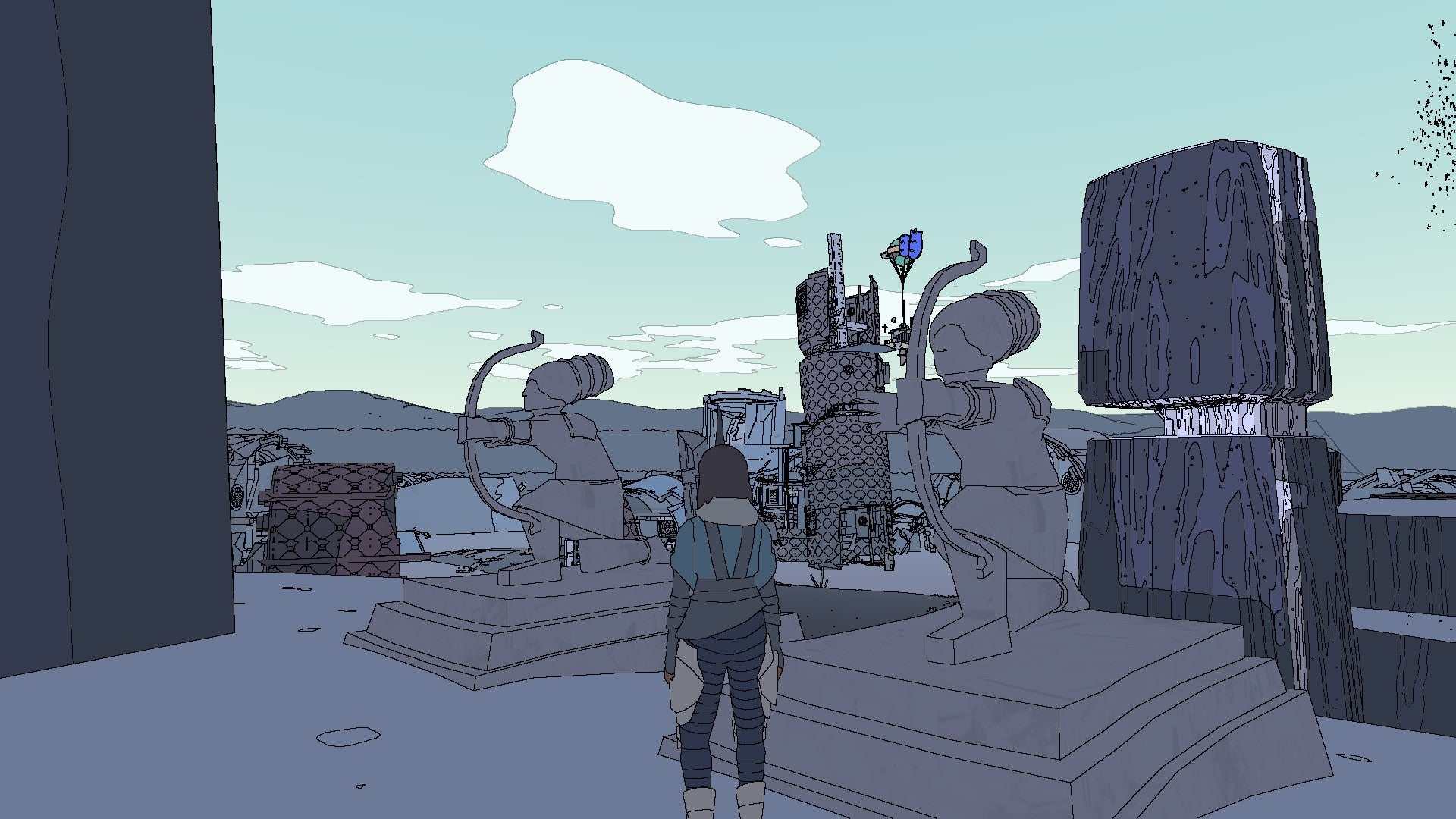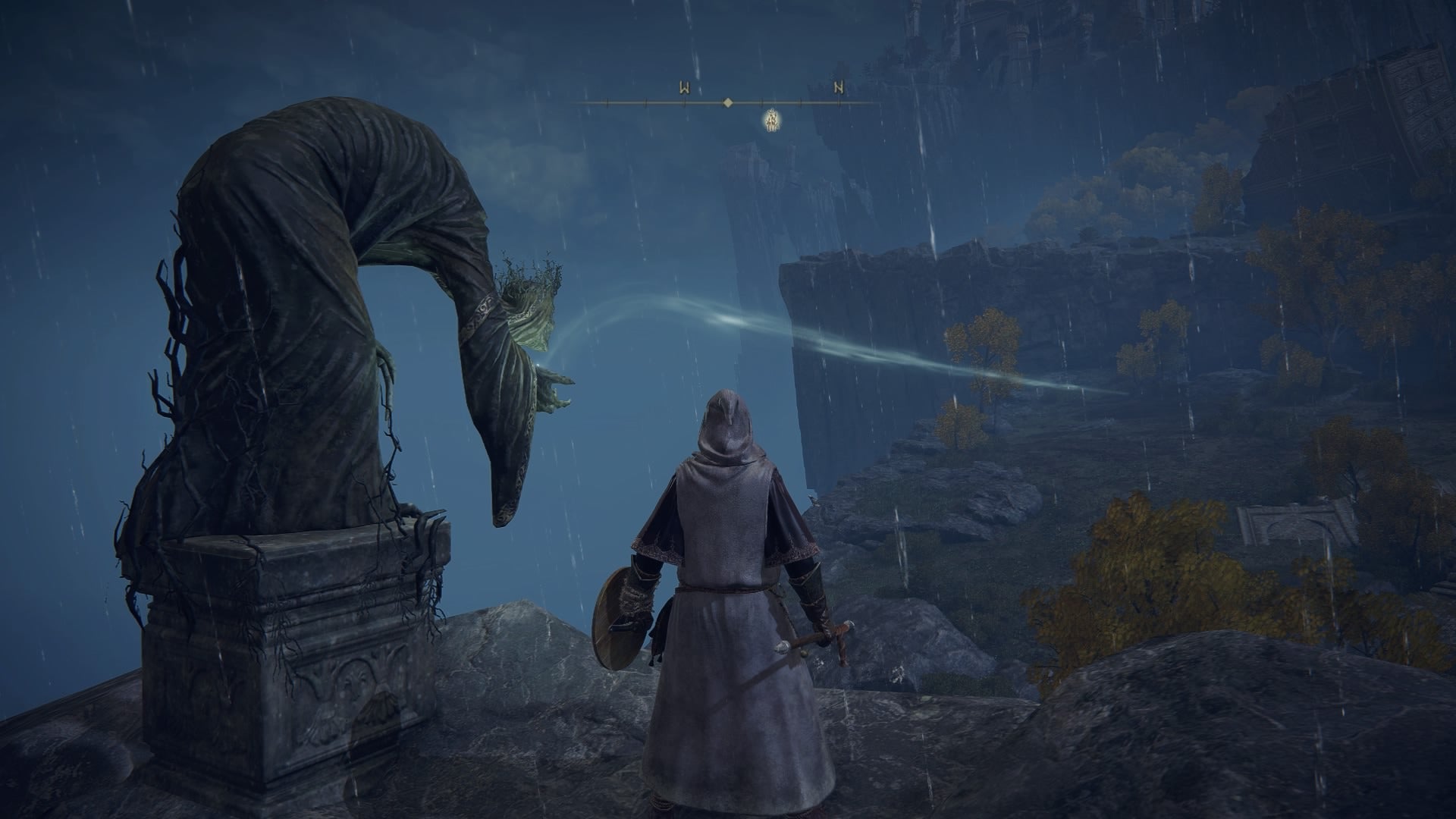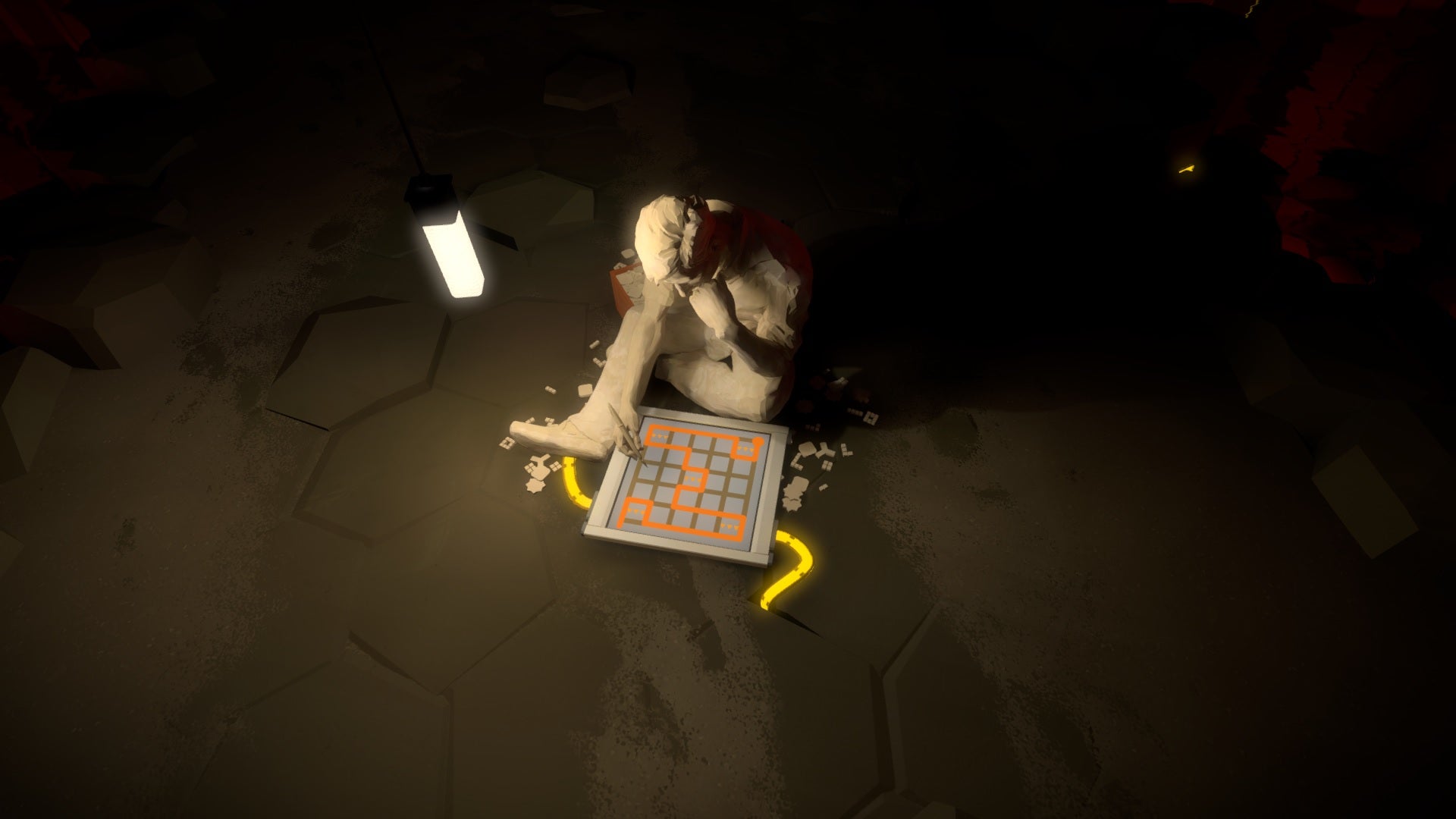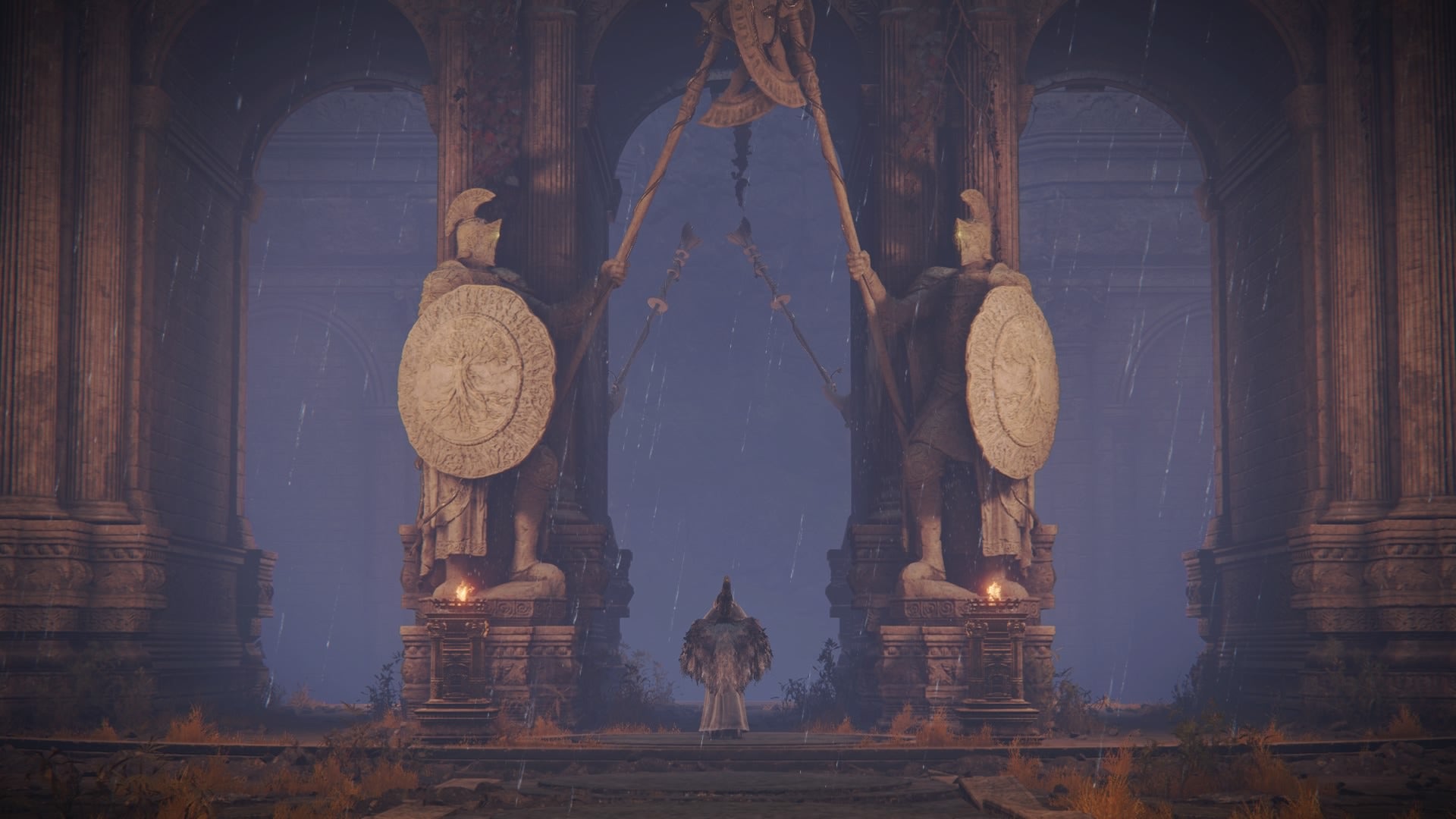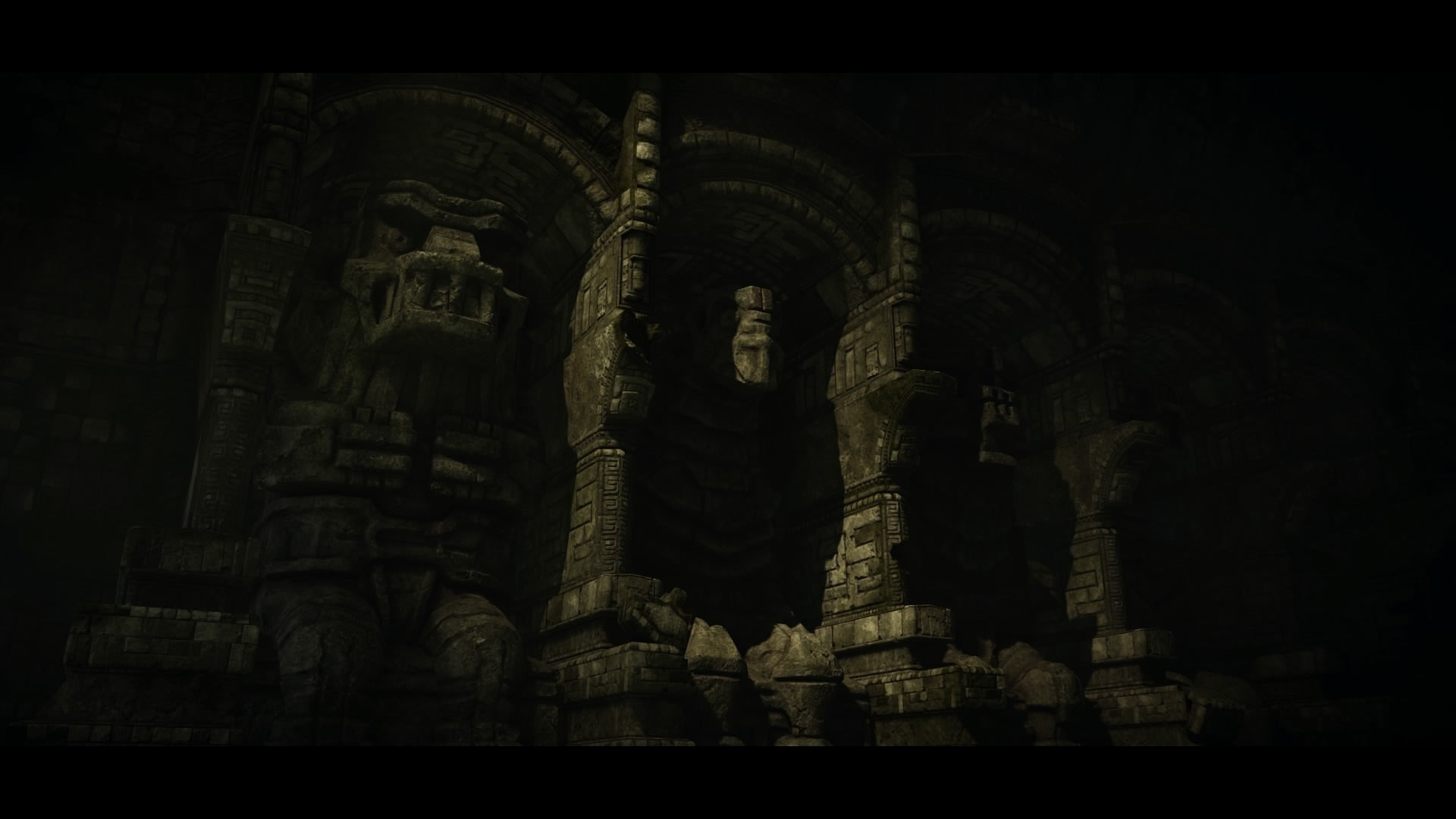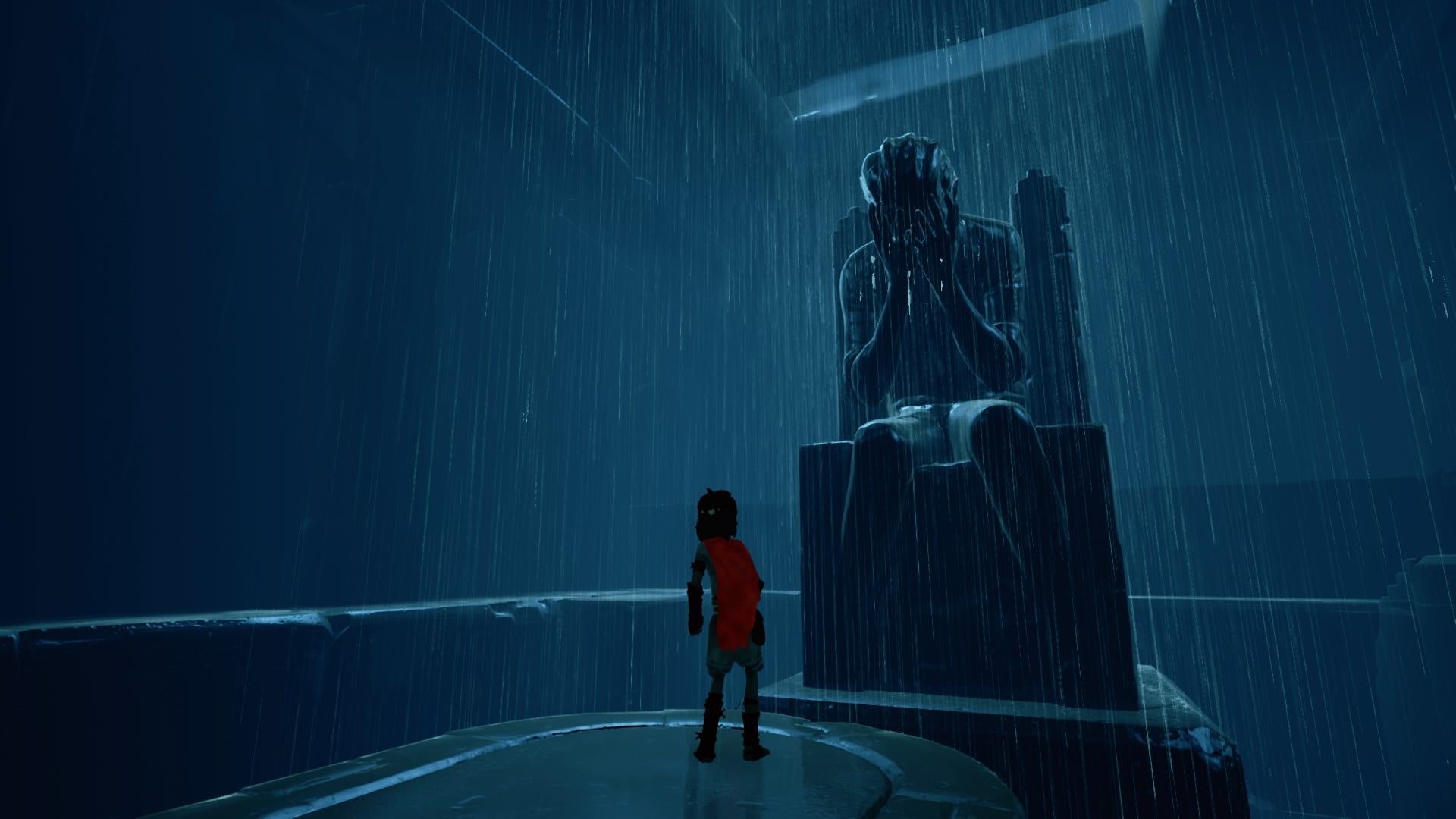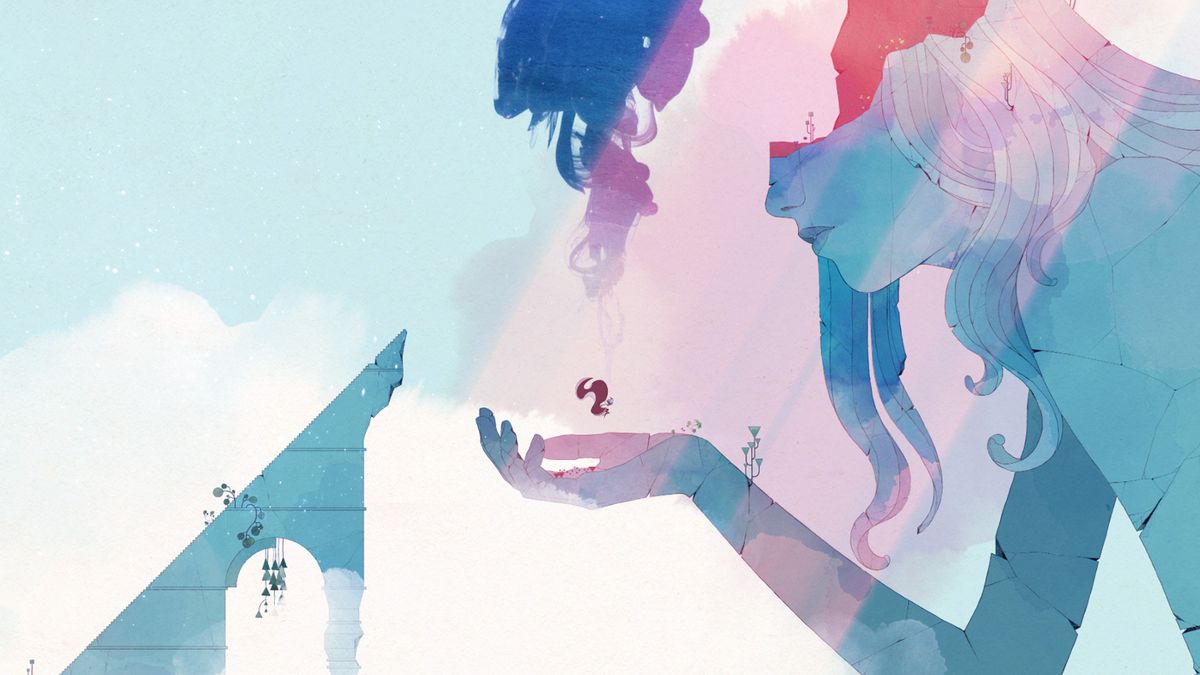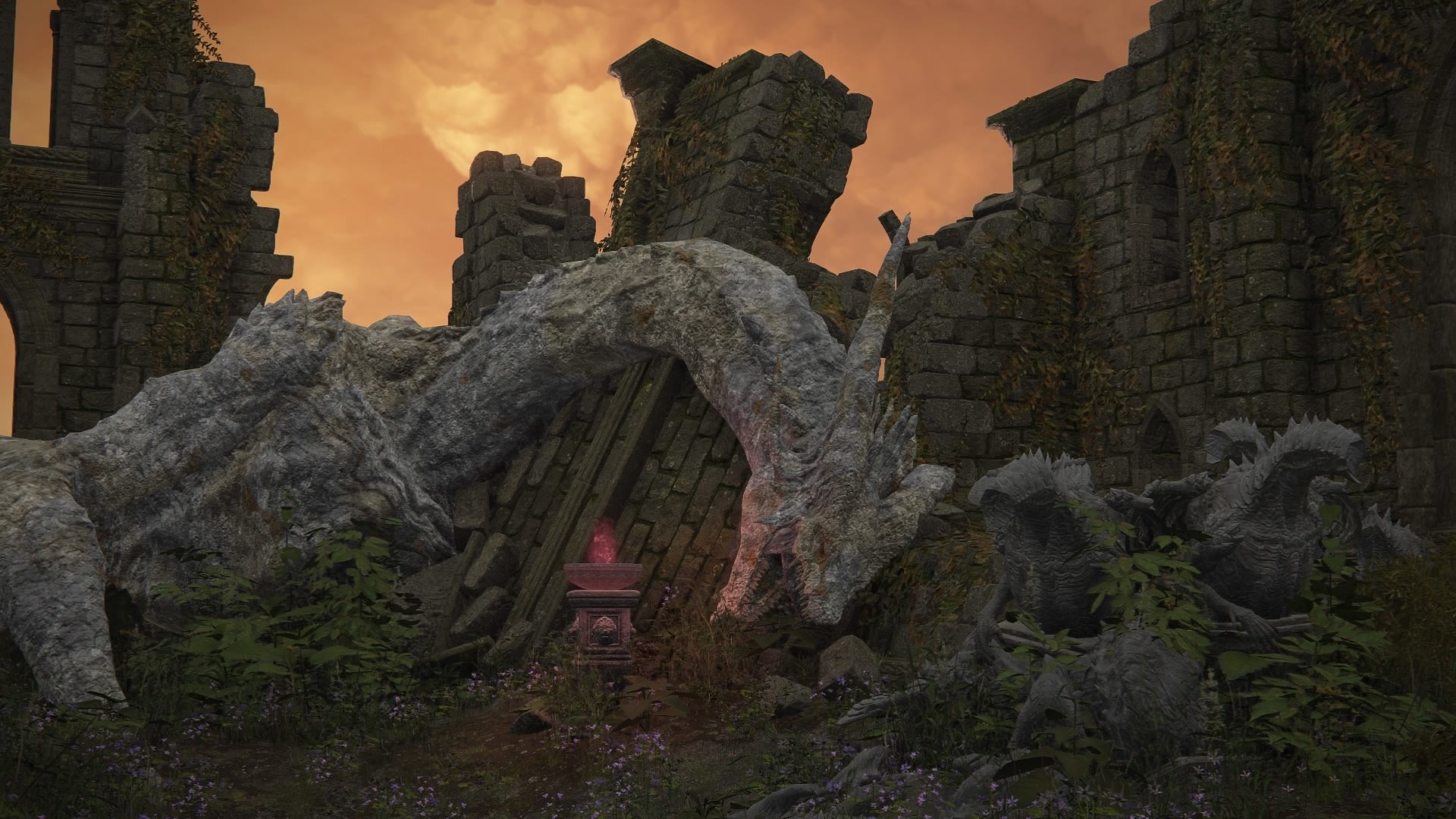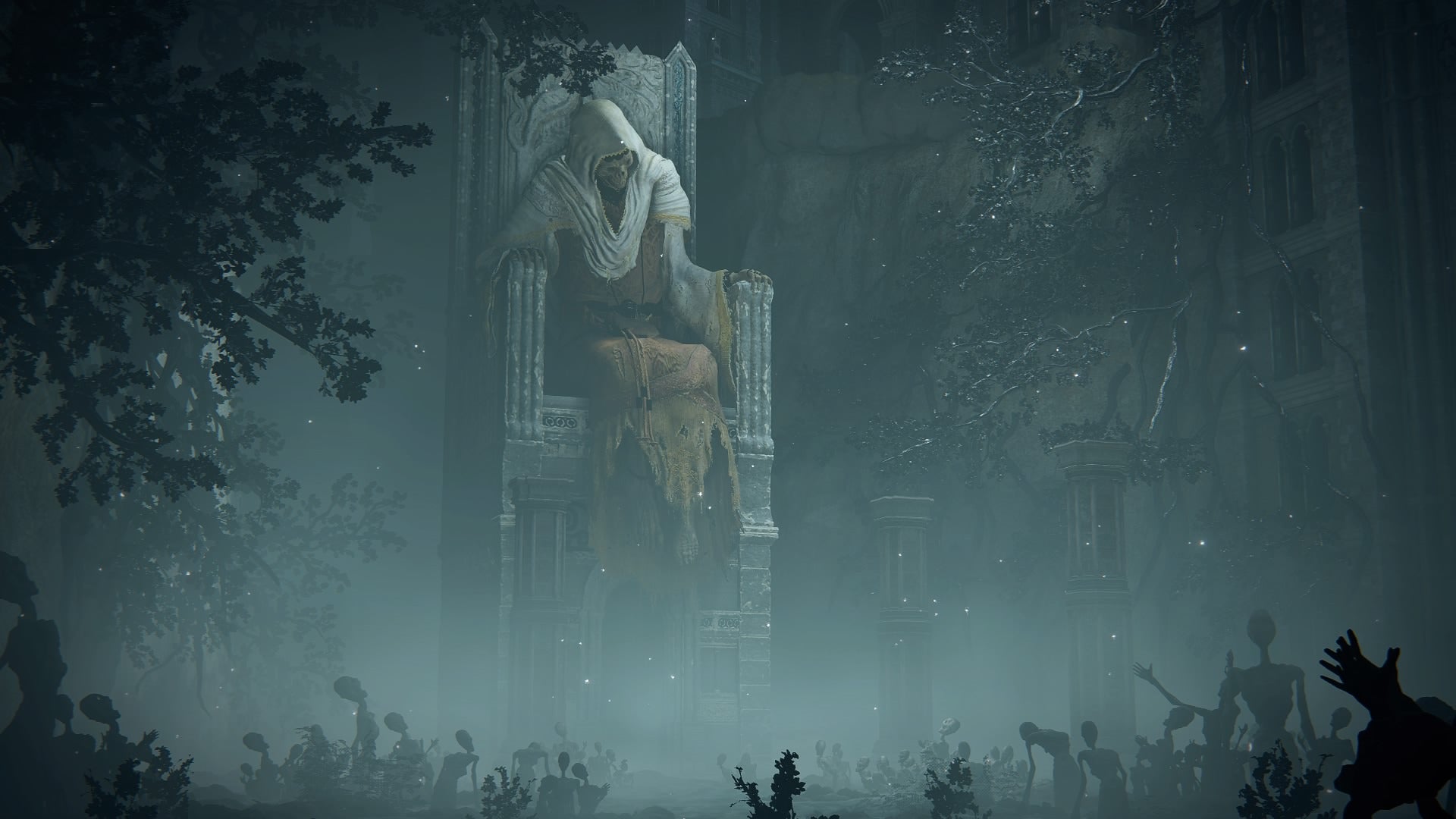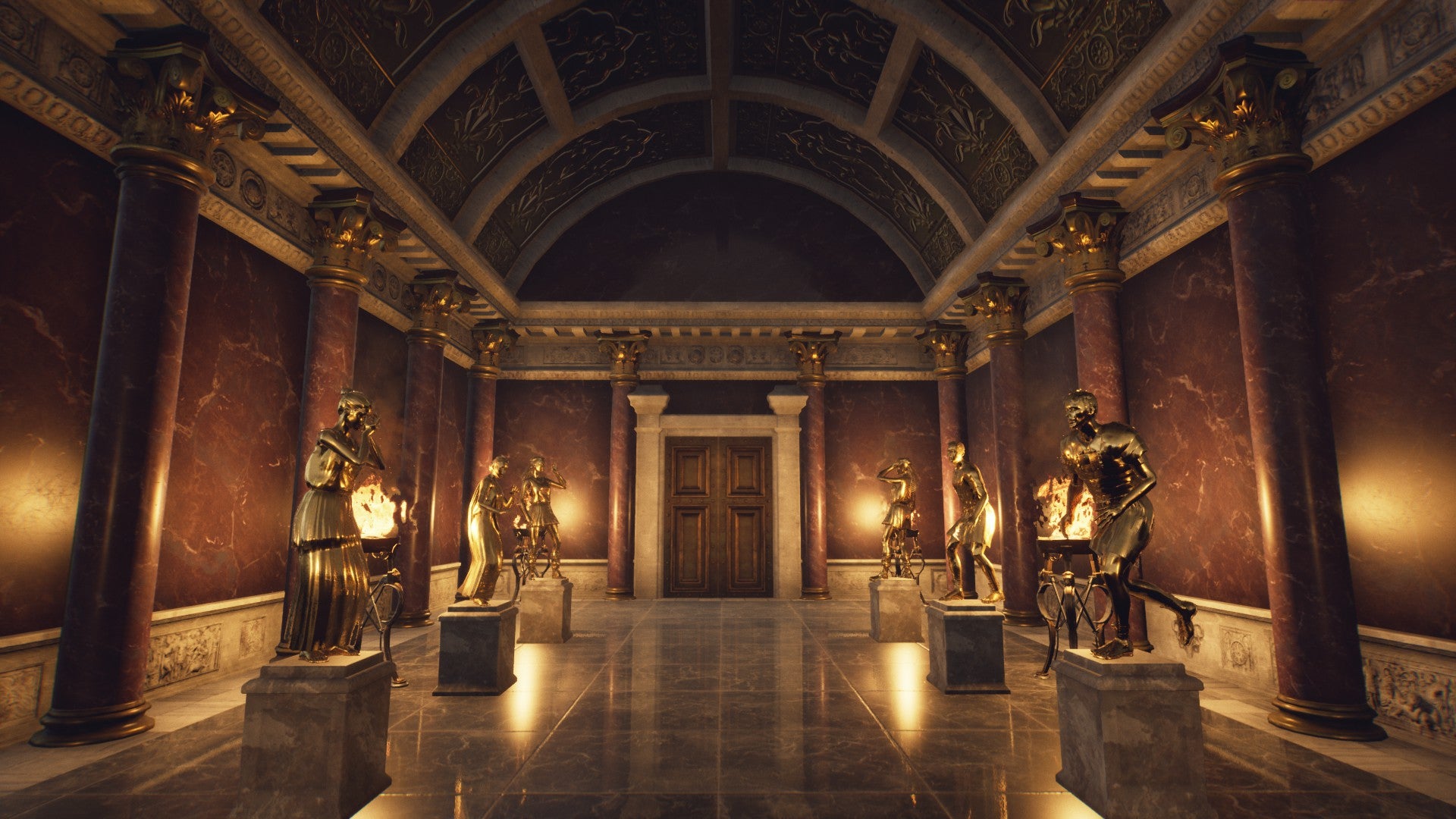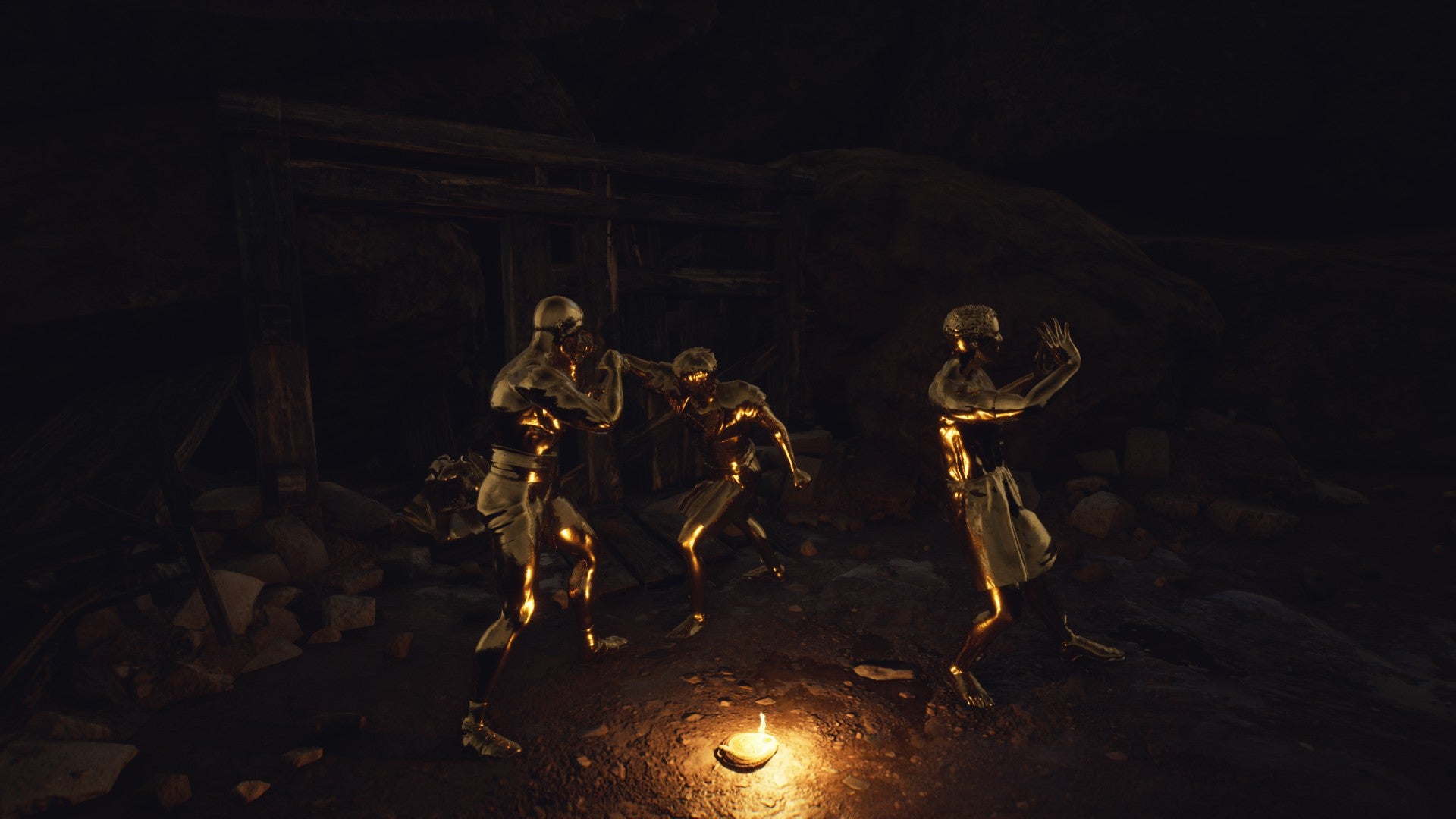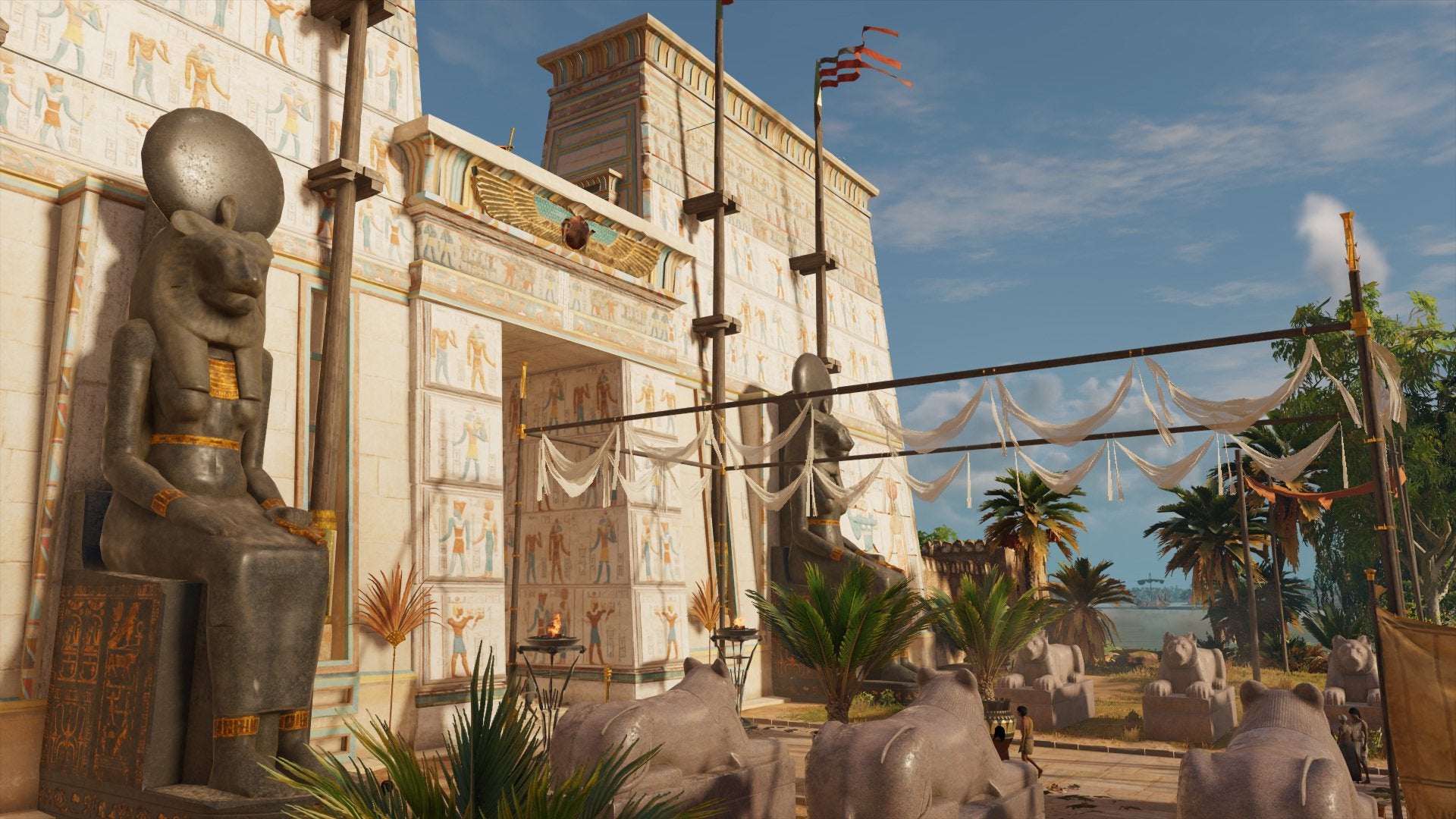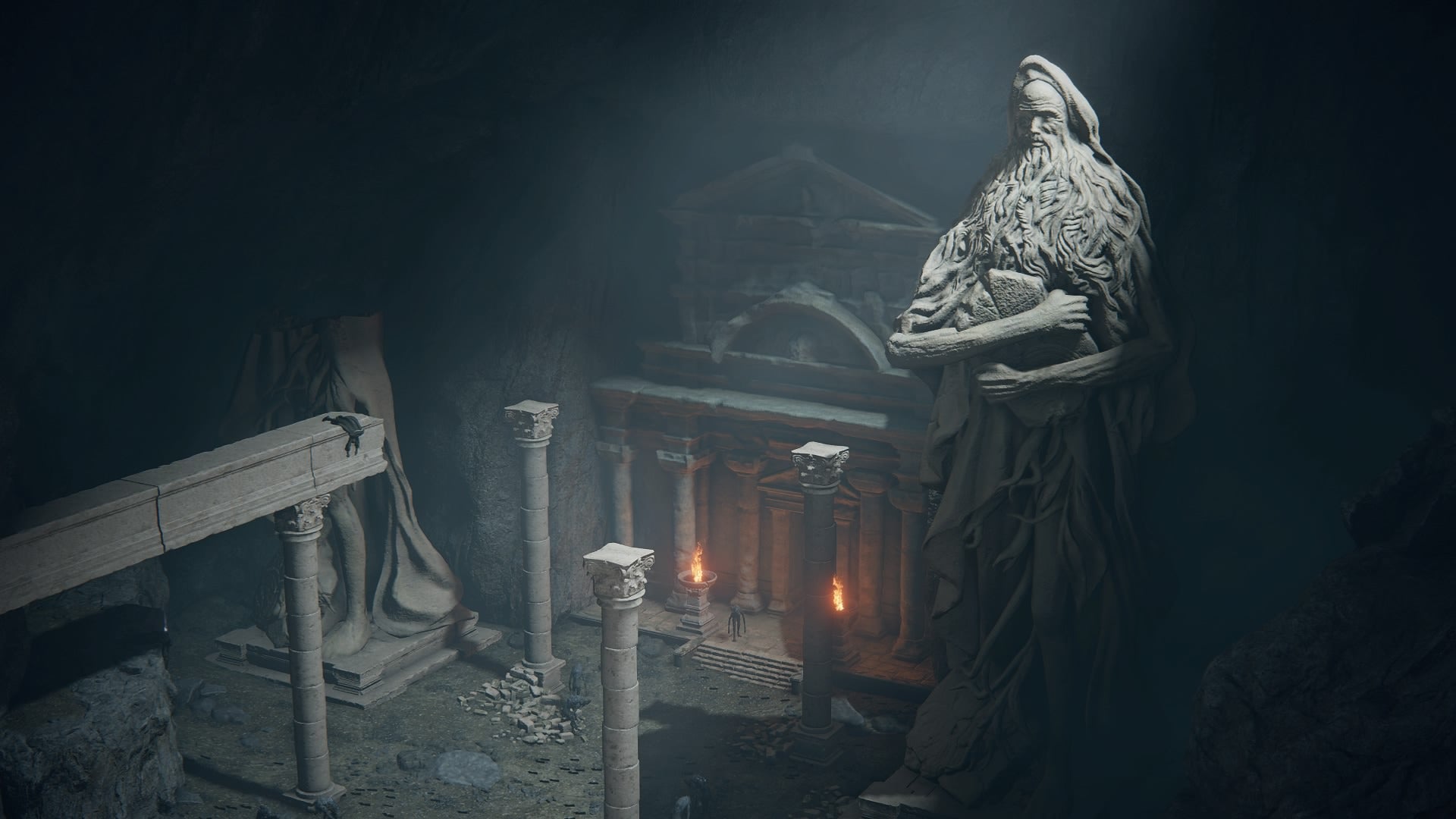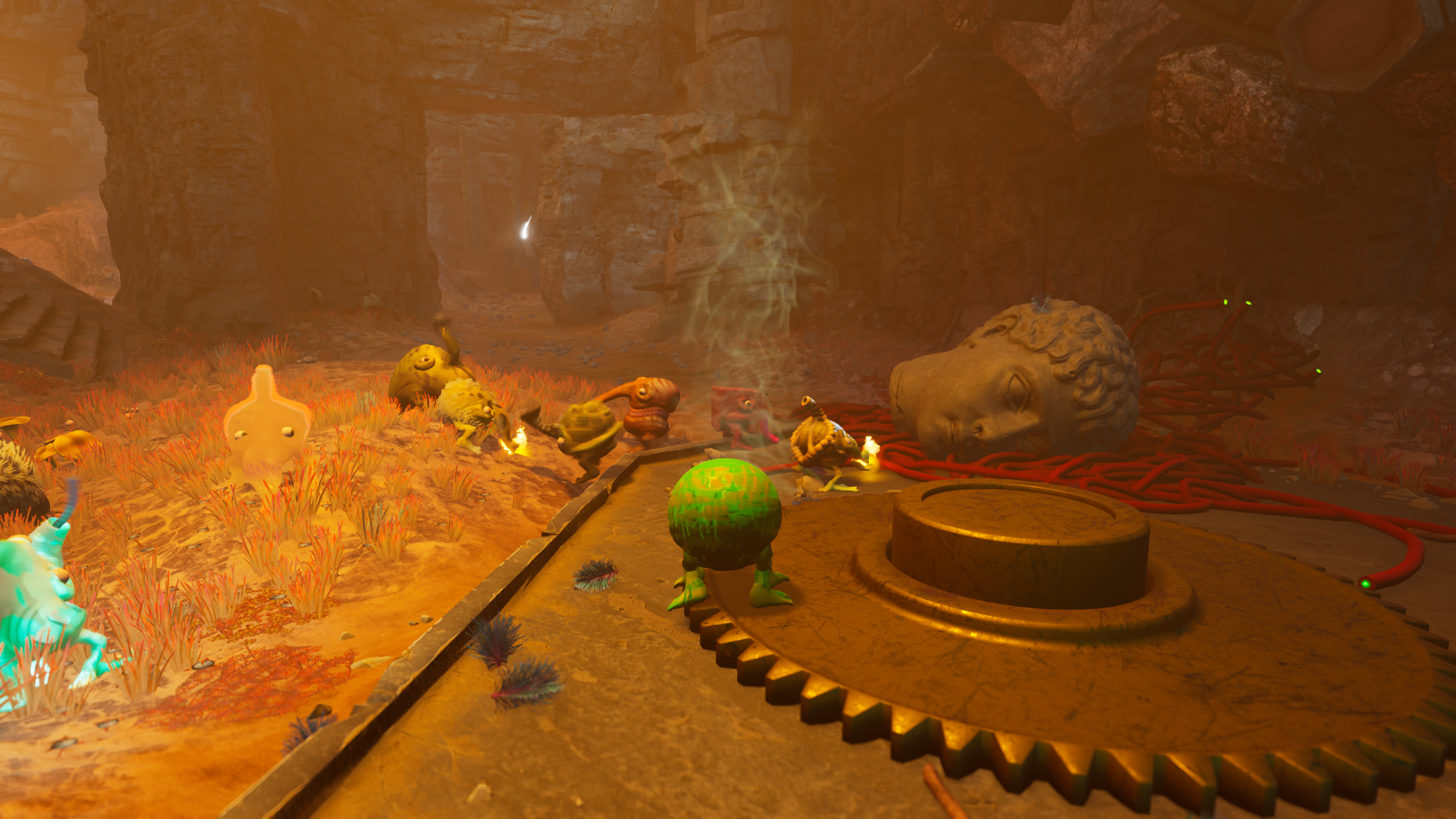It is maybe one of the fundamentals of life that if you really want to draw attention, you splurge on something that has next to no practical value. A fancy sport car is well and good, but a giant jewel or a triumphal arch is better. “No practical value” doesn’t mean, of course, that these things have no use in a broader sense. It is precisely the void of any practical purpose which opens up spaces for meaning. Grand but useless things talk; they convey social and cultural importance. Statues, then, whether in real life or virtual worlds, are uniquely suited for drawing our eyes and for provoking the question: what does it mean? What is this doing here, in this particular spot? Who put it there, why, and how long ago? At their most basic and fundamental, statues in games often serve a central function: gently pointing our attention towards points of interest. In Divinity: Original Sin 2 or Metroid: Dread, statues indicate waypoints and save points. The goddess statues of Breath of the Wild allow us to exchange orbs for upgrades. And in countless games, foremost From Software’s Soulsborne games, an imposing statue at the centre of a room almost guarantees either a boss fight or treasure (or both). Another related function of statues, especially the really big ones, is as unique landmarks and guides. Two statues flanking a door is a certain sign that this is the direction you’re supposed to be headed. Just like large buildings or mountains, statues can be a tool that help make sense of virtual landscapes by breaking them into distinct segments. Since statues usually have easily distinguishable front and back sides, orienting yourself in relation to them becomes even easier. And if the giant statue is climbable, like in Sable, it also doubles as a lookout. Statues can also point the way. Sometimes, they do this quite literally, with outstretched arms and index finger or the tip of an arrow as in Sable. In this way, statues often become part of a puzzle’s larger architecture; they either provide subtle hints for the solution like the statues in The Witness sometimes do, or they must be manipulated, moved, destroyed or pushed over in order to make progress. To do so, statues rely on our unconscious and instantaneous sympathy towards images of human or human-like figures: we are conditioned to follow a statue’s gaze, to react with curiosity towards a statue’s hands reaching out in an inviting gesture of gift-giving. Some games find ingenious uses of statues. In Shadow of the Colossus, each of the 16 statues in the temple stands for a colossus that needs to be slain. After each victory, the associated statue crumbles, letting us know how far we’ve already progressed, and which colossus still need to be confronted. Statues, however, do more than just point or guide. They’re also expressive works of art rooted in their respective worlds and their stories. Being (usually) fashioned in our own image, they’re an incredibly effective way of conveying moods as well as emotional or psychological states. An entire sub-genre of taciturn narrative games inspired by games like Ico and Journey have turned statues into one of their main modes of expression in lieu of language. Rime, Gris and Sea of Solitude all make use of metaphorical landscapes punctuated by abandoned and broken statues. In the manner of pathetic fallacy, these statues not only convey the central beats of a story but act as monolithic manifestations of the protagonists’ grief and psychological struggles. If statues can evoke empathy, it only makes sense that they can also threaten and disconcert. From the mannequins of Silent Hill and other horror games to From Software’s oppressive statues, games have long embraced the inherent ambiguity of dead objects created to resemble living beings. The exact quality that makes them able to draw our sympathy can also easily turn them into uncanny objects and targets of our fear and repulsion. Elden Ring is especially fond of blurring the lines between statues and living beings. Its stone-skinned golems and gargoyles, its giant skeletons resting on monolithic thrones, its distorted humanoid limbs protruding from architecture, its petrified dragons and rotten beast cadavers fused to stone pillars; they all challenge our ability to categorise, to tell lethal threat from creepy background decoration. It questions the very assumption that there are clear distinctions to be made at all. The Forgotten City uses its statues in similar ways. The city we explore is scattered with countless and very lifelike golden statues. Some of them have been arranged in orderly fashion in places appropriate for statues, but others can be found in forgotten corners, seemingly frozen mid-movement in altercations or moments of terror. They can be heard whispering, and if we turn our backs to them, some move their heads to follow our movements. Breaking one of the city’s golden rules brings some of the statues to life; they begin to hunt down and petrify any living being not yet turned to gold. The petrified citizens of The Forgotten City illustrate another task in which statues excel: anchoring virtual worlds and grounding them in societal, religious and historical depths. Statues provide an easy way to express what any given place, culture or ruling class values; the historical events or myths they use to make sense of the world, the leaders, gods or mythical figures that demand respect and veneration. Statues and the values they’re imbued with are created to last, to conserve, even immortalise a world order by turning it into stone. The world around them, however, usually doesn’t indulge them for very long. Just as in Percy Shelley’s poem Ozymandias, the ironic tension between the desperate and arrogant clinging to a historical moment and the eventual irrelevance of that moment creates a sense of historical pathos. The crumbling and puzzling statues of Dark Souls or Elden Ring signify a world order that has moved well past its zenith, a desolate and dying world whose few surviving inhabitants are vastly outnumbered by the stone effigies created in their likeness. The Eternal Cylinder features another ingenious moment of transience: in a world so alien it feels like a faraway planet, we come across the stone head of a classical statue. One of the last vestiges, it turns out, of our long forgotten human world. Unmoving and lifeless though they are, statues can do a surprising number of things; they can guide and hint, tell stories and evoke moods, provide insights into the inner life of people or into the societal and historical strata that make up a virtual world. What’s more, a single statue can perform any number of these tasks all at once, even as we’re unconscious of all the load bearing it is there to do. The next time you play, say, Elden Ring, try to think of what it would be like if all the statues were removed from the game, and what would be missed.
